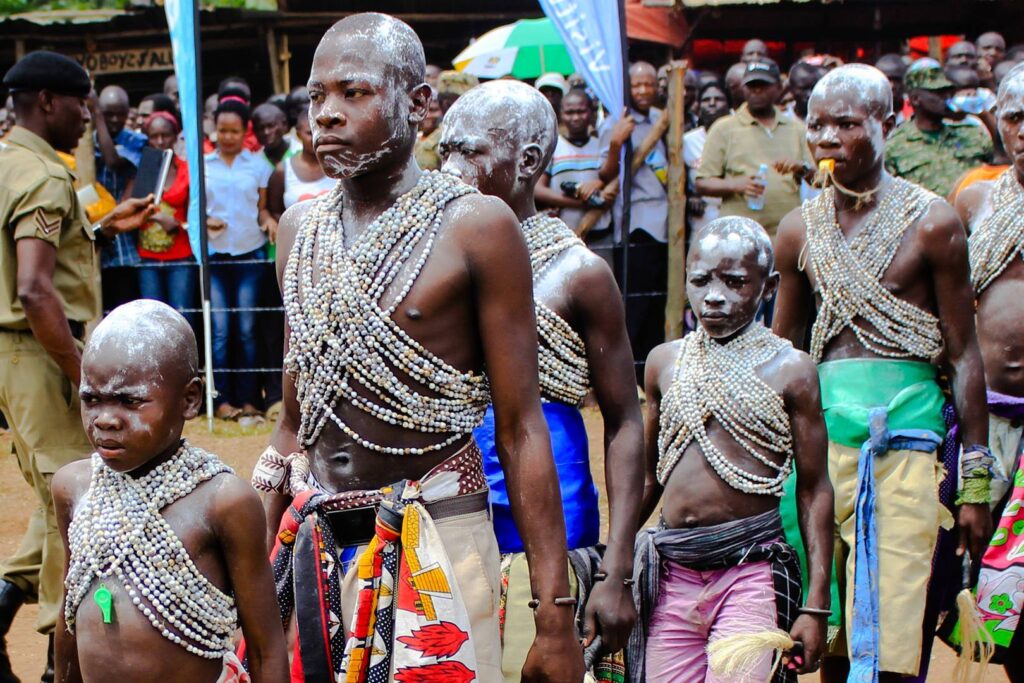The Bagisu and their culture
The Bagisu and their culture: There is no history of early migration among the Bagisu. According to folklore, they claim that their ancestors, Mundu and Sera, emerged from a hole on Mount Masaba. It appears that their early years were antisocial, almost founded on the idea of “survival of the fittest.” Although very little is currently known about their past, they are thought to be related to the Bukusu, a subgroup of the Luhya of Kenya.

It is thought that at some point during the 1800s, the Bagisu broke away from the Bukusu. It is not trendy to follow the custom that they have always resided in the same location throughout history. It is thought that the first immigrants to the Bugisu area came from the eastern plains and settled in the Mt. Elgon area in the sixteenth century.
It is believed that their first home was in Kenya’s Uasin Gishu plateau. They appear to be the result of the blending of peoples from many cultures and origins, but as they speak Bantu, their ancestors ought to have been Bantu speakers as well.
Rituals associated with circumcision
Even the Bagisu themselves are unsure of the true origin of this tradition. According to one myth, it started when Masaba, the ancestor of the Bagisu hero, wished to wed a Kalenjin girl, and the Banpa (Kalenjin) demanded it. According to another version, circumcision began as a surgical procedure to save the life of the first person to be circumcised, who had a sexual organ issue.
Another legend states that the first person to be circumcised received the procedure as retribution for luring other people’s wives. According to legend, the decision was made to circumcise him in order to partially castrate him. Following his recovery, he went back to his previous routines, and there were rumors that he had improved his marital skills. Other males made the decision to get circumcised as well in order to compete favorably.
The Bagisu people are extremely superstitious.
An initiate is given a certain plant known as ityanyi before to circumcision. Its goal is to stimulate the candidate’s interest in circumcision. The ityanyi is frequently knotted around the initiate’s big toe or positioned so that he could unintentionally hop over it.
Since the candidate’s mind is supposedly so stimulated towards circumcision that nothing else can divert him, it is said that if he is delayed or prevented from getting circumcised, he may end up getting it done himself. During leap years, the Bagisu undergo circumcision every two years. When a boy reaches puberty, he must complete the rite.
Those who flee are pursued and circumcised in a mocking and violent manner. The initiates are prepared by walking and dancing through the villages for three days before to the day of circumcision. Malwa-yeast paste is used to paint their heads after they have been dusted with cassava flour. There is a lot of drumming and singing, and their family join them in dancing.
When the Bagisu is circumcised
After being forced to sit on a stool, the initiate is covered with a piece of cloth. He is then brought to his father’s house and forced to walk around it before he may enter. The initiate is prohibited from using his hands to eat for three days. He has been fed. It’s because he hasn’t been fully introduced into manhood, they say.
Three days later, the circumciser is asked to wash the initiate’s hands as part of the ceremony. The initiate is allowed to eat with his hands following this ceremony. The initiate is pronounced a man that same day. At that point, custom permits him to get married. The initiate receives instruction on the responsibilities and expectations of manhood during the ceremony.
In addition, he is taught the importance of agriculture and is counseled to act like a man at all times. The number of goats killed during the initiate’s circumcision is thought to have an impact on how quickly the wounds heal.
Following recovery
There is a ritual. Attendance is required of all new initiates in the community. Iremba is the name of this ceremony. Everyone in the hamlet, including government officials these days, attends this significant event. The initiate could choose any girl and engage in sexual activity with her during ritual procedures. It was not expected of the girl to say no. Refusing is thought to have prevented her from having children after marriage.
If selected, this presents issues for Christian women. In the past, only initiates and the circumciser were permitted inside the designated enclosures where circumcision was performed. Outside the enclosure, the rest of the assembly would simply wait and listen. However, everyone is now permitted to observe the entire procedure. It is considered a sign of bravery when an initiate exhibits firmness and courageous endurance.
The Public Imbalu Circumcision Ceremonies offer a glimpse into the customs and culture of the Bagisu, and we will notify you if your Uganda safari coincides with one of these events.



